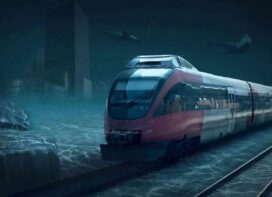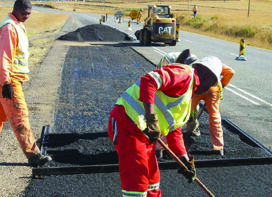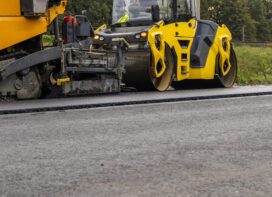
Dr.Ambika Behl, CSIR
Dr.Ambika Behl, CSIR makes a strong statement inviting women to be part of India’s infrastructure development
The increased road construction activities have resulted in increased demand for pavement materials and how do we achieve a balance?
Transport and communications are the two most important components for the development and economic growth of a country. Roads are one of India’s most important components of transport infrastructure. India has a network of over 6,215,797 kilometres (3,862,317 miles) of roads as of 1 December 2021. The allocation for the Ministry of Road Transport and Highways saw a hike of 36% with around `2.7 lakh crore for 2023-24.
The government has ambitious plans for India’s roads. Bharatmala is an umbrella programme of government for developing NHs to improve the movement of freight and passengers by road. It seeks to bridge critical infrastructure gaps in the highway infrastructure. It also seeks to develop 50 economic corridors and provide connectivity to 550 districts, and improve the average speed of road travel. Similarly, the PM Gati Shakti National Master Plan launched to provide for coordinated development of transport, seeks to create a system for interconnected and multimodal transportation networks.
Increased connectivity and improved road infrastructure developed in the country in the recent past has resulted in significant increase in the growth of traffic in terms of both number of vehicles and axle loads. The enhanced capacity building activities have resulted in an increased demand of materials and thereby allowing depletion of naturally occurring materials like stone aggregates and bitumen. The road infrastructure sector in India is on boom and so is the concern to make it environment friendly and more sustainable.
We do talk about achieving 30% reduction in carbon emissions in road construction.
 India aims to reach net zero by 2070. Net zero, or becoming carbon neutral, implies not adding greenhouse gases to the atmosphere which is very difficult for India to achieve looking at the growth & development scale taking place in industry in each sector. Can the new method be green and sustainable without hindering growth? Reducing the amount of carbon dioxide occurring as a result of transport and power generation is essential to meet the net zero target set for India.
India aims to reach net zero by 2070. Net zero, or becoming carbon neutral, implies not adding greenhouse gases to the atmosphere which is very difficult for India to achieve looking at the growth & development scale taking place in industry in each sector. Can the new method be green and sustainable without hindering growth? Reducing the amount of carbon dioxide occurring as a result of transport and power generation is essential to meet the net zero target set for India.
Globally, road transportation accounts for about 20 percent of total CO2 emissions and 74 percent of total transportation emissions. Road construction sector is a significant driver of demand for construction materials and equipment that have a substantial carbon footprint. Road infrastructure in India is mainly dominated by flexible pavement type. There was a study done to track and measure the carbon footprint of flexible pavement. The construction process was mapped and CO2-eq was measured during the production and transportation of raw materials and operations of plant off site and onsite project. The results showed total emissions of 70,900 tonnes of CO2-eq consisting 34248 tonnes (48%) offsite activities and 36640 tonnes (52%) onsite activities. Road construction agencies can have a huge impact on lowering emissions, particularly from energy used on road networks, building materials and fleet operations.
If we change our road construction practices, then we can achieve about 30% reduction in carbon emissions. We need to build de-carbonization road maps around five areas: improving energy efficiency and increasing renewable generation, enabling sustainable mobility, circularity, climate resilient roads. Some of the technologies which are proven and can lead to attain sustainability in road construction are: use of locally available/marginal materials, recycling of pavements, artificial aggregate, bio-binders, waste materials and stabilized pavements. We can have many innovations in design, construction method and materials to reduce carbon emissions.
Talking of women in road construction sector…
India needs improvement especially if we talk about Women participation in Construction sector. India tops the world in producing female graduates in STEM but ranks 19th in employing them, which reflects that either females do not get the opportunity or they quit and do not opt for engineering jobs as their career. According to the United Nations, women constitute merely 14% of the total 280,000 scientists, engineers and technologists in research development institutions in India. All India Survey on Higher Education 2018-19 says, just 3% of women enrol in PhD in sciences and only 6% opt for a PhD in Engineering and Technology.
Such statistics and numbers enforce us to think that: Are women not inclined towards maths and sciences? Or is there some research that indicates that only men have that special gene required to grasp science, technology, engineering and work in field? It is a fact that the engineering world is dominated by men. Also, many people say that this field is not for you, because of the construction site challenges or the extra hours needed for the job. I feel women are not a fragile gender.
I believe if more opportunities are given and an ecosystem is created then women can set different standards for STEM.
A recent survey shows nearly three-quarters of construction companies see digital transformation as a top priority, with new technologies opening doors for women in the workforce. Digital transformation & automation offers opportunities to enhance productivity and make construction jobs easier which ultimately help to address labor shortages and also open doors for women in this field.
 TrafficInfraTech Magazine Linking People Places & Progress
TrafficInfraTech Magazine Linking People Places & Progress


